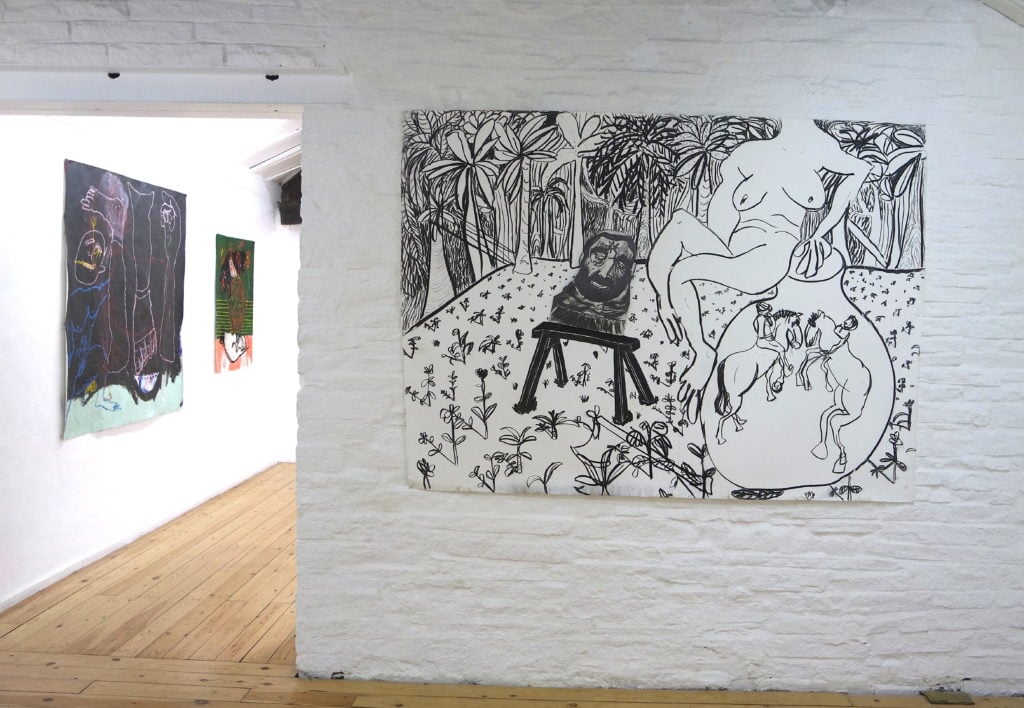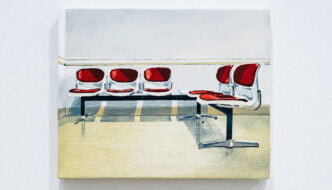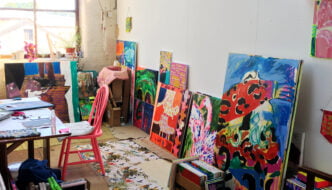Review: Rufus Newell, Hercules and his Club @ South Square Gallery
June 16, 2016

All I ever wanted, Frank Stella said once, was to keep the paint as good as it was in the can. It’s a heavy responsibility, working with materials you love, but Rufus Newell wears it lightly. On winning the 2016 Joan Day painting bursary, Newell went shopping “to London to buy, oil bars, pigments, chalks and some amazing pastels”. Sure enough, his kid-in-a-sweet-shop enthusiasm for paint itself and his materials fills South Square’s airy attic space.
You might usefully make a distinction between paint and the act of painting. Poor old painting. The trouble with painting is that it can’t fail to be art’s most well-behaved child, always held up by sceptics as the pinnacle of “proper art”. Once a world of infinite possibilities, it came to embody conservatism – the four white boys with guitars of the visual arts. Painting, of all art forms, is the one that best conveys instant gravitas – and for this reason, it can make non-painters suspicious, or even make it feel a bit regressive and quaint to be a painter these days. None of this is paint’s fault, and it shouldn’t diminish the splashy joy and sense of potential and possibility that paint still embodies: who doesn’t want to dive head first into Frank Stella’s perfect paint can? Paint itself doesn’t have to be any of the things it’s come to signify – it can be messier, more fun.
Happily a sense of play pervades South Square. It’s only recent graduate Newell’s debut solo show, as well as a celebration of his bursary award, and he shows a varied practice here. Asger Jorn-ish faces peek out, puking red from daubed mouths, collaged heads cling on to painted backgrounds. Modishly sketched, muscular classical bodies and horses writhe and wrestle, hyper-masculine and loose in primary colour pastels. Fight club motifs recur but there’s a cartoony and borderline-camp sense of humour at work here suggesting more than your basic crisis-ridden masculinity.

Newell’s work is strongest when it stands up on its own and walks off the page – a painted wastepaper bin is a standout piece. Elsewhere in his practice he has been working on slices of “paint cake”, and more of these playful and sculptural elements would have been welcome here. Perhaps it’s painting’s conservatism striking again: he wouldn’t be the first artist to feel restricted by the format. The more he can break out of paintings constraints the better – the work here doesn’t need to be a goody two-shoes, hanging neatly on a wall, sellable and scaleable.
At times it feels as though his work is more about the process than it is about the subject matter. That’s no bad thing, and in the works on display here the recurring fighting metaphor is fitting considering the obvious tension between the desire to depict things and the pull towards process and abstraction. But his enthusiasm is infectious, with a sense of joy that suggests promise and plenty to build on.
South Square Gallery, Thornton, Bradford – until 26 June.




Comments